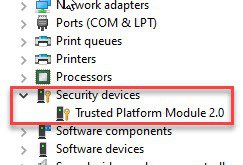- Local time
- 5:33 AM
- Posts
- 10
- OS
- Windows 10
Like I understood Microsoft plan to make TPM 2 mandatory for Windows 11 to install , surprisingly I checked 3 of my laptops that were manufactured in years 2011 , 2015 , 2017 respectively which are all made by Lenovo to the surprise that non of them have TPM what so ever , not even the 1.2 version .
So the question is , will this mean that all these laptops will undergo planned obsolescence ? Or rather that we are about to await certain modders cracking windows to over-ride the TPM function ? Or that there will be some dongles , M2 modules to compensate for the lack of TPM ?
Bare in mind all those laptops perform optimally under Windows 10 as I managed to increase their rams to max on each , mind you upgraded their hdds to ssds and even their PCI-E / M2 Wifi cards to AX standard !
So the question is , will this mean that all these laptops will undergo planned obsolescence ? Or rather that we are about to await certain modders cracking windows to over-ride the TPM function ? Or that there will be some dongles , M2 modules to compensate for the lack of TPM ?
Bare in mind all those laptops perform optimally under Windows 10 as I managed to increase their rams to max on each , mind you upgraded their hdds to ssds and even their PCI-E / M2 Wifi cards to AX standard !
My Computer
System One
-
- OS
- Windows 10







